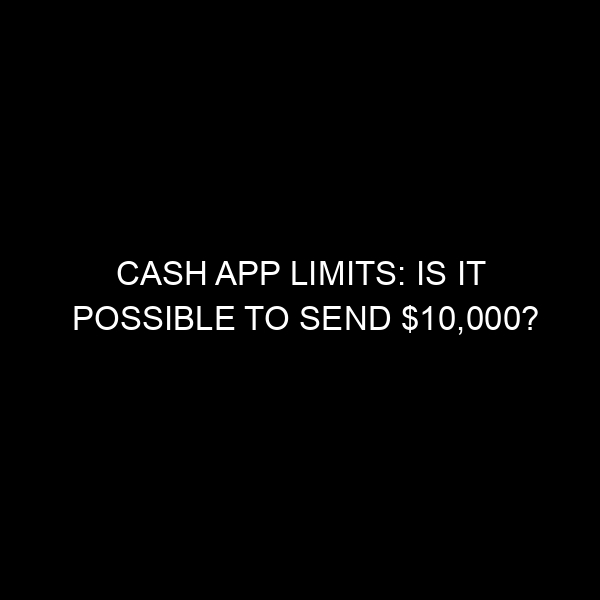Cash App Limits: Is It Possible to Send $10,000?
Since its inception, the Cash App has made waves in the world of digital finance, offering users an intuitive way to send and receive money. For those new to Cash App, it is a peer-to-peer money transfer service developed by Square, Inc. As with most financial platforms and tools, Cash App comes with certain transaction limits. A common query among its users is: Can you send $10,000 through the app?
Given the rising prominence of digital payment platforms and the banking industry’s evolving landscape, understanding these limits is crucial for both individual and business users. So, let’s dive deep into Cash App’s transaction boundaries, the factors influencing them, and whether it’s feasible to send $10,000 in a single go.
Understanding Cash App’s Basic Limits
For first-time users or those who haven’t fully verified their account, Cash App offers a comparatively restricted sending and receiving limit.
Unverified Accounts:
- Sending Limit: $250 per week.
- Receiving Limit: $1,000 per month.
Considering these figures, sending a hefty sum like $10,000 for unverified users is out of the question.
Elevating Your Cash App Limits
While the aforementioned limits might seem restricting, there’s a ray of hope. Users can elevate their transaction limits by verifying their account. Verification typically requires users to provide their full name, date of birth, and the last four digits of their Social Security Number.
Verified Accounts:
- Sending Limit: $7,500 per week.
- Receiving Limit: No limit.
Post verification, while you can’t send $10,000 in one go, you can send up to $7,500 per week. This certainly brings you closer to the mark.
Factors Influencing Cash App Limits
Cash App’s transaction limits aren’t set in stone. They can be influenced by several factors:
- Account Verification Status: As established earlier, verified accounts have a higher transaction ceiling.
- Transaction History: An account with a history of regular and legitimate transactions might have fewer restrictions.
- User Behavior: Suspicious activities can lead to lowered limits or even account suspension.
- Local Regulations: Local financial regulations and restrictions can play a role, especially if you’re operating in regions with stringent financial oversight.
Comparing Cash App Limits with Other Digital Payment Platforms
To gain a holistic understanding, it’s worth comparing Cash App with other leading payment platforms:
- PayPal: Offers a sending limit of $60,000, but may be limited to $10,000 in a single transaction for certain accounts.
- Venmo: A weekly rolling limit of $4,999.99 for payments to friends and family for verified accounts.
- Zelle: Limits vary based on the user’s bank, but many major banks set the limit at $2,500 per day.
Tips for Sending Large Amounts Through Cash App
If you’re planning to send substantial sums through Cash App or any digital payment platform, keep the following guidelines in mind:
- Divide and Transfer: Since you can’t send $10,000 in one transaction, consider dividing it into chunks. Remember, Cash App’s limit is $7,500 per week for verified users.
- Check Local Laws: Ensure you’re not breaching any local money-transfer regulations.
- Be Transparent: If using Cash App for business, maintain clear records to prevent suspicions of money laundering or illicit activities.
- Use Linked Bank Accounts: For larger transactions, consider using your linked bank account for a more traditional bank transfer.
Conclusion
While Cash App offers a seamless method of money transfer, there are limitations to be cognizant of. Verified users can send up to $7,500 weekly, which means sending $10,000 in one transaction isn’t feasible. However, with strategic planning and adherence to the guidelines, one can navigate these limits effectively. Always remember to operate within the legal confines and prioritize the safety and security of your financial transactions.






